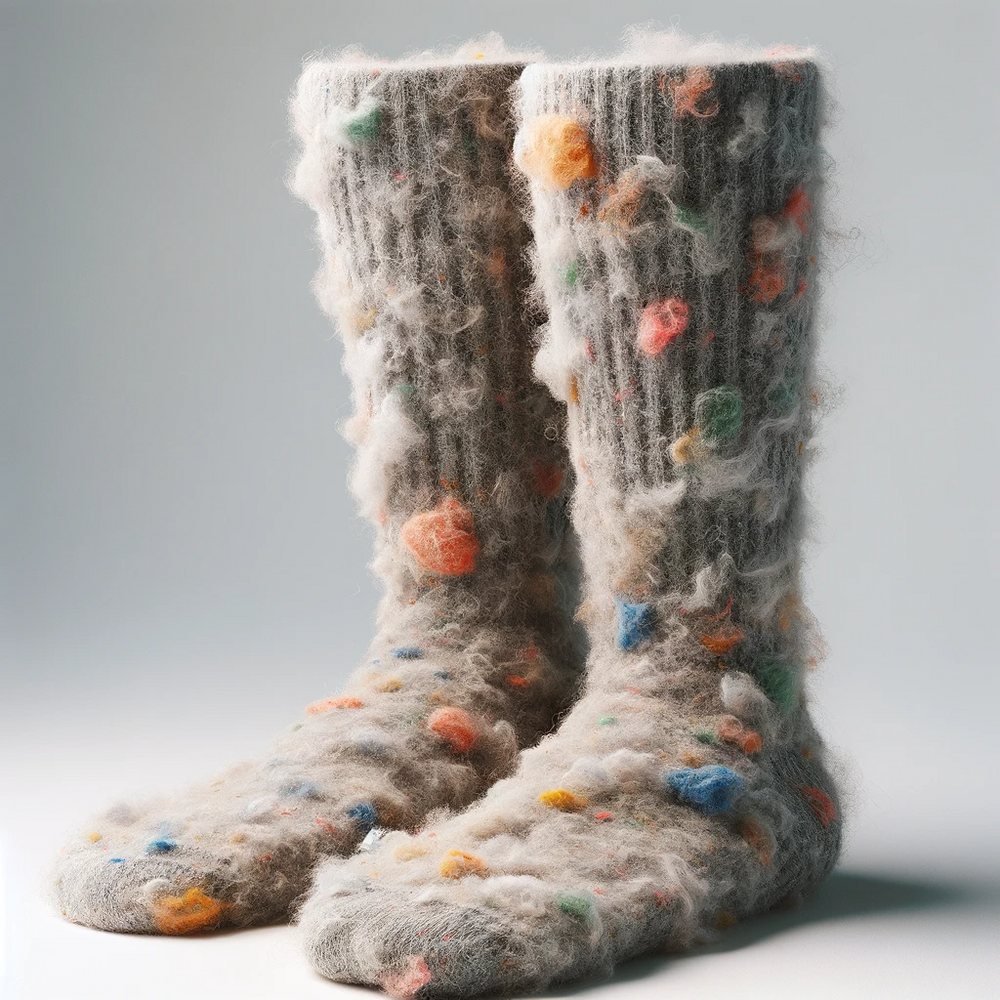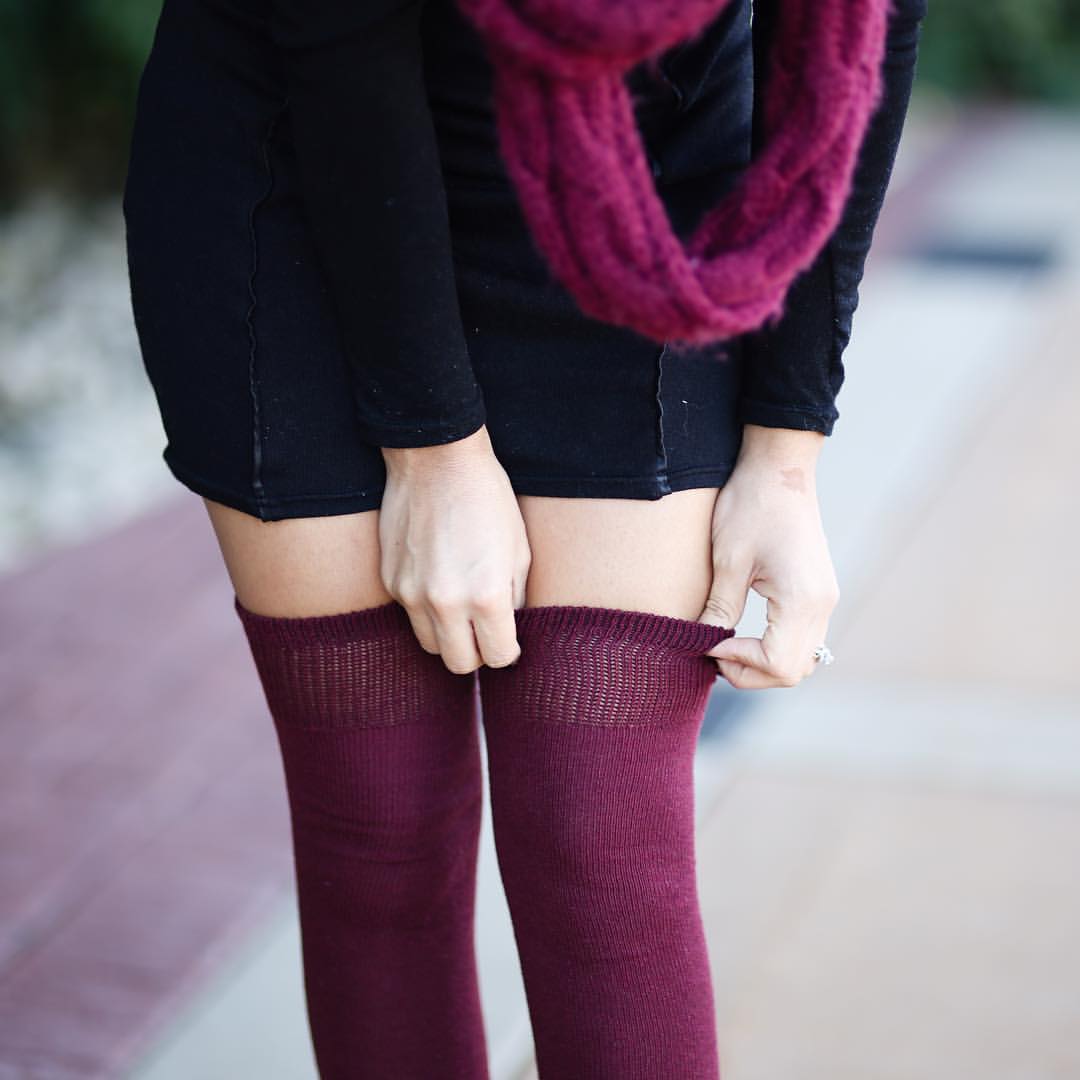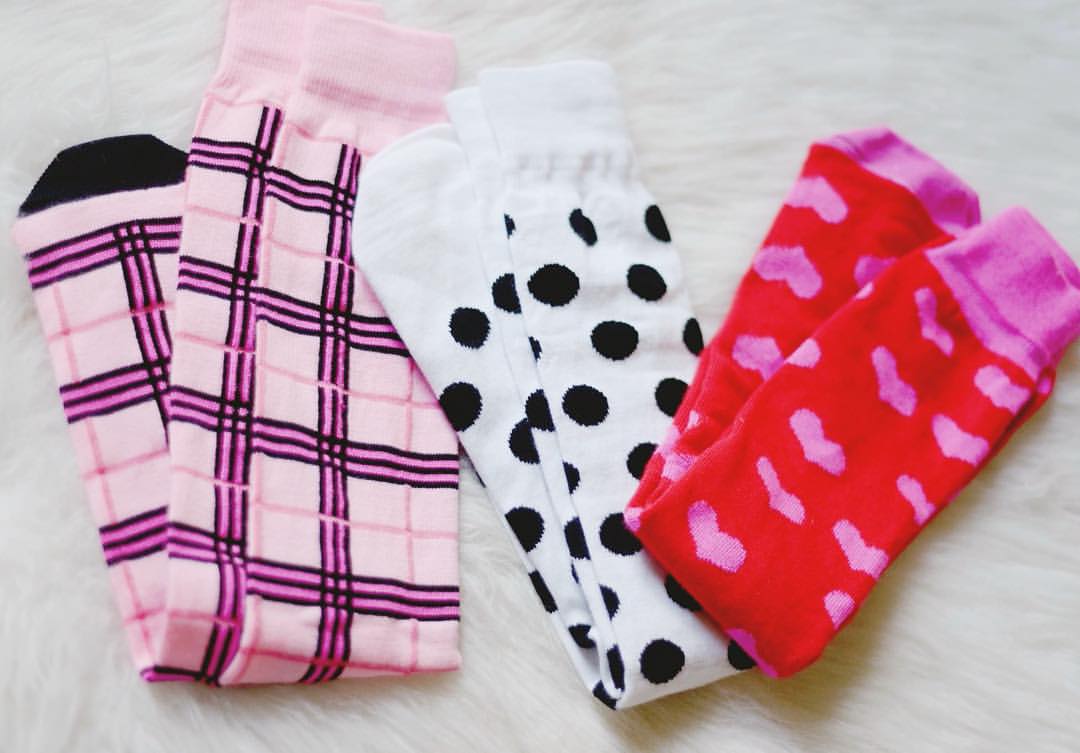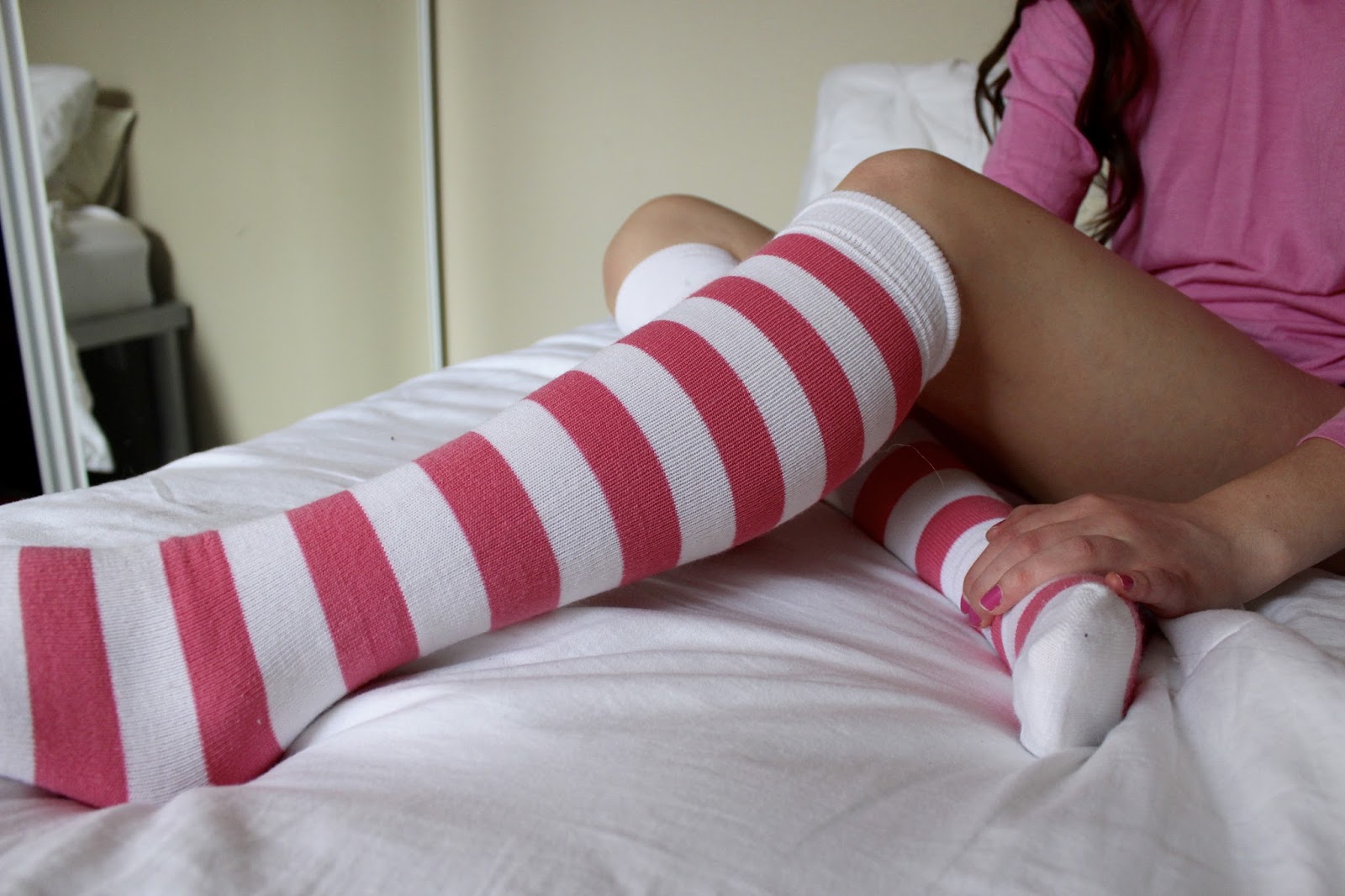How to Keep Socks Lint Free
Do your socks always seem to end up covered in annoying lint? Don't worry, you're not alone! Lint can be a pesky issue, but with a little knowledge and some simple maintenance techniques, you can keep your socks looking fresh and lint-free. In this article, we'll guide you through the process of understanding lint formation, choosing the right sock materials, adopting proper washing techniques, drying strategies, and regular sock maintenance to prevent lint. Let's dive right in!
Understanding the Basics of Lint Formation
Lint, those small fibers that detach from fabrics, can be quite a nuisance on your socks. But have you ever wondered how lint forms in the first place? It's actually quite fascinating! Lint is essentially made up of loose fibers that come from the surface of the fabric. These loose fibers can break or loosen due to various factors, resulting in the lint you find on your socks.
What is Lint and How Does it Form?
Lint is composed of tiny fibers that detach from the fabric's surface. When fabrics are produced, they often have loose fibers that can break or come loose during everyday use. These loose fibers then accumulate and form the lint that clings onto your socks.
Let's dive deeper into the process of lint formation. When fabrics are manufactured, they go through a series of processes such as spinning, weaving, and finishing. During these processes, fibers are intertwined to create a cohesive fabric. However, not all fibers are tightly secured, and some may remain loosely attached to the fabric's surface.
As you wear your socks, these loosely attached fibers can break or become dislodged due to various factors. Friction plays a significant role in lint formation. With each step you take, the fabric of your socks rubs against the inside of your shoes, causing the fibers to loosen. Additionally, when your socks rub against other fabrics, such as the lining of your shoes or the inside of your pants, more fibers can break and contribute to lint buildup.
It's not just external factors that contribute to lint formation. The quality of the fabric and the construction of the socks also play a crucial role. Poorly constructed socks or those made from low-quality materials are more likely to shed fibers and generate lint. When the fibers used to create the fabric are not securely bound, they are more prone to breaking and creating lint.
Factors Contributing to Lint on Socks
Several factors contribute to lint formation on socks. Poorly constructed socks or those made from low-quality materials are more likely to shed fibers and generate lint. Additionally, excessive friction caused by walking, rubbing against other fabrics, or even improper sock care can also contribute to lint buildup. Understanding these factors is key to tackling the lint issue!
Now that we have explored the various factors that contribute to lint formation, it's important to address how to minimize lint on your socks. Choosing socks made from high-quality materials and with strong construction can significantly reduce lint generation. Additionally, taking proper care of your socks, such as washing them in gentle cycles and avoiding harsh detergents, can help preserve the integrity of the fabric and prevent excessive lint buildup.
So, the next time you find lint on your socks, you'll have a better understanding of how it formed and what steps you can take to minimize it. Remember, it's all about the fabric, construction, and care!
The Importance of Quality Sock Material
Choosing the right sock material is crucial when it comes to preventing lint. High-quality socks can significantly reduce the amount of lint you find on your footwear. Let's take a closer look at different sock materials and how they influence lint formation.
When it comes to selecting the perfect pair of socks, it's not just about style and comfort. The material of the socks plays a vital role in determining their durability, breathability, and even their ability to resist lint. Understanding the different sock materials available can help you make an informed decision and ensure that your feet stay lint-free.
Different Types of Sock Materials
Socks come in various materials, each with its own unique properties. Cotton, perhaps the most popular material, is breathable and comfortable but can be prone to lint. It is a natural fiber that feels soft against the skin, making it a popular choice for everyday wear. However, cotton socks tend to shed fibers more easily, leading to lint accumulation on your footwear.
Synthetic materials such as polyester and nylon are known for their durability and resistance to lint. These materials are often blended with other fibers to enhance their performance. Polyester, for example, is a synthetic fiber that is resistant to wrinkles, shrinking, and fading. It is also known for its quick-drying properties, making it a popular choice for athletic socks. Nylon, on the other hand, is a strong and lightweight material that offers excellent durability and breathability.
Consider which material suits your needs best! If you are looking for comfort and breathability, cotton socks may be the right choice for you. For those seeking durability and resistance to lint, synthetic materials like polyester and nylon are worth considering.
How Material Influences Lint Formation
The sock material plays a crucial role in lint formation. Some materials shed fibers more easily, while others are more resistant to lint. Socks made from high-quality materials are less likely to generate excessive lint, keeping your feet looking clean and tidy.
When you wear socks, friction occurs between your feet and the inside of your shoes. This friction can cause the socks to shed fibers, leading to lint accumulation. However, the extent of lint formation depends on the material of the socks. High-quality sock materials, such as wool or synthetic blends, are less prone to shedding fibers, resulting in reduced lint formation.
Additionally, the construction of the socks can also influence lint formation. Socks with tighter weaves or reinforced stitching are less likely to shed fibers, further reducing lint accumulation. It's important to choose socks that are well-made and constructed with high-quality materials to minimize lint and ensure long-lasting wear.
By selecting socks made from materials that are less likely to generate lint, you can maintain a clean and polished appearance for your footwear. Investing in high-quality sock materials not only contributes to your overall comfort but also helps extend the lifespan of your socks and reduce the time spent cleaning lint from your shoes.
Proper Washing Techniques for Lint-Free Socks
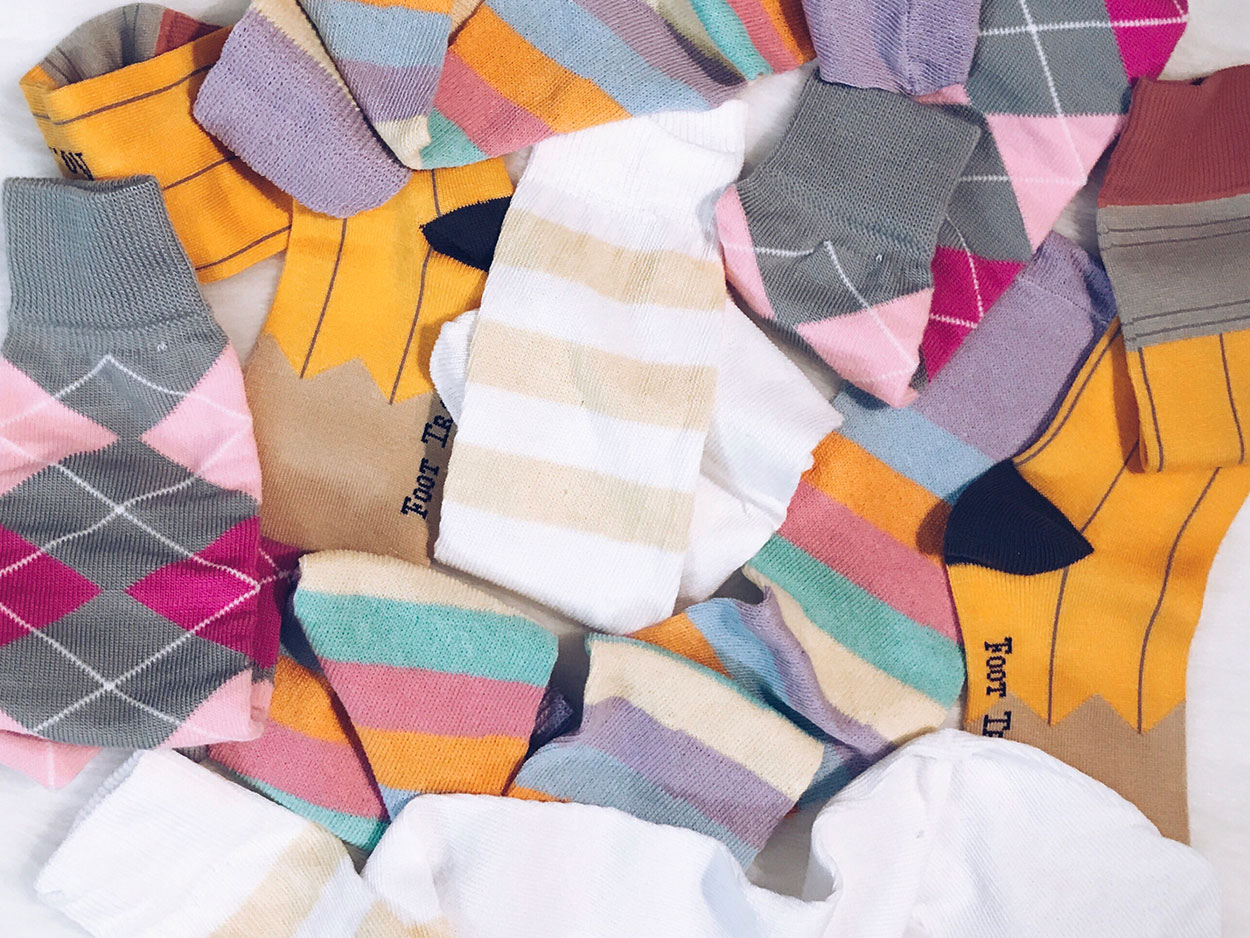
Now that we're familiar with the basics of lint formation and sock materials, it's time to explore how to wash your socks properly to minimize lint. By adopting the right washing techniques, you can help prevent lint buildup and keep your socks looking their best.
Pre-Washing Tips for Reducing Lint
Prior to washing your socks, there are a few simple steps you can take to minimize lint. First, turn your socks inside out. This will help reduce friction and limit the exposure of the outer surface, which is more likely to shed fibers. By turning your socks inside out, you create a barrier between the fabric and the washing machine's agitator, reducing the chances of lint formation.
In addition to turning your socks inside out, sorting them according to color and fabric can also prevent lint transfer between different garments in the washing machine. Separating dark-colored socks from light-colored ones can prevent dye transfer, while separating delicate materials like wool or cashmere from more robust fabrics like cotton can minimize lint formation.
Best Practices for Washing Socks
When it comes to washing your socks, it's essential to follow a few best practices. Start by using a gentle or delicate wash cycle, as this will minimize agitation and reduce the risk of lint formation. The gentle cycle is designed to be less harsh on fabrics, reducing the chances of lint being released from the sock fibers.
In addition to using a gentle wash cycle, it's important to avoid using excessive detergent. While detergent is necessary to remove dirt and odors from your socks, using too much can leave behind soap residue. This residue can contribute to lint buildup, as the fibers stick together and become more prone to shedding. Using the recommended amount of detergent or even slightly less can help prevent this issue.
Furthermore, consider washing your socks separately from garments that shed lint, such as towels or fuzzy fabrics. Washing them together can result in lint transfer, with the lint from one garment attaching to the socks. By washing your socks separately, you minimize the risk of lint transfer and keep your socks looking clean and lint-free.
Drying Socks to Prevent Lint
Believe it or not, your drying method plays a crucial role in preventing lint on your socks. By adopting the right strategies, you can minimize or even eliminate lint formation during the drying process.
The Role of Drying in Lint Formation
As your socks dry, any loose fibers that did not detach during the washing cycle can come loose. These fibers can then accumulate and lead to lint formation. By understanding this process, we can implement effective techniques to prevent it!
Tips for Lint-Free Drying
To dry your socks in a way that minimizes lint, consider air-drying whenever possible. Hanging your socks to dry naturally reduces the friction and heat that can cause lint formation. If using a dryer, set it to a low heat or delicate cycle to minimize agitation. Also, be sure to clean the lint trap before each use as a preventive measure against additional lint accumulation.
Regular Sock Maintenance for Lint Prevention
To keep your socks lint-free in the long run, adopting a few daily habits can make all the difference. Let's explore some maintenance practices to help you maintain your socks and prevent lint from becoming a recurring issue.
Daily Habits to Keep Socks Lint-Free
A simple but effective daily habit is to avoid walking on rough surfaces like carpet or concrete when wearing socks. These surfaces can cause friction that loosens fibers and leads to lint formation. Additionally, regularly checking and trimming any loose threads on your socks can prevent them from unraveling and shedding more fibers. Taking a few minutes each day to care for your socks can save you from lint-related woes!
Long-Term Care for Your Socks
Lastly, it's essential to provide your socks with proper long-term care. This includes rotating your sock collection regularly to minimize wear and tear on individual pairs. When storing socks, keep them in a clean and dry space away from potential lint generators. By maintaining your socks well, you can extend their lifespan and keep them lint-free for longer.
By following these tips and tricks, you'll have a better understanding of lint formation, know which sock materials are less prone to shedding fibers, and be equipped with effective washing, drying, and maintenance techniques to keep your socks lint-free. With a little extra care and attention, your socks can look fresh and lint-free, making every step you take a comfortable one!

